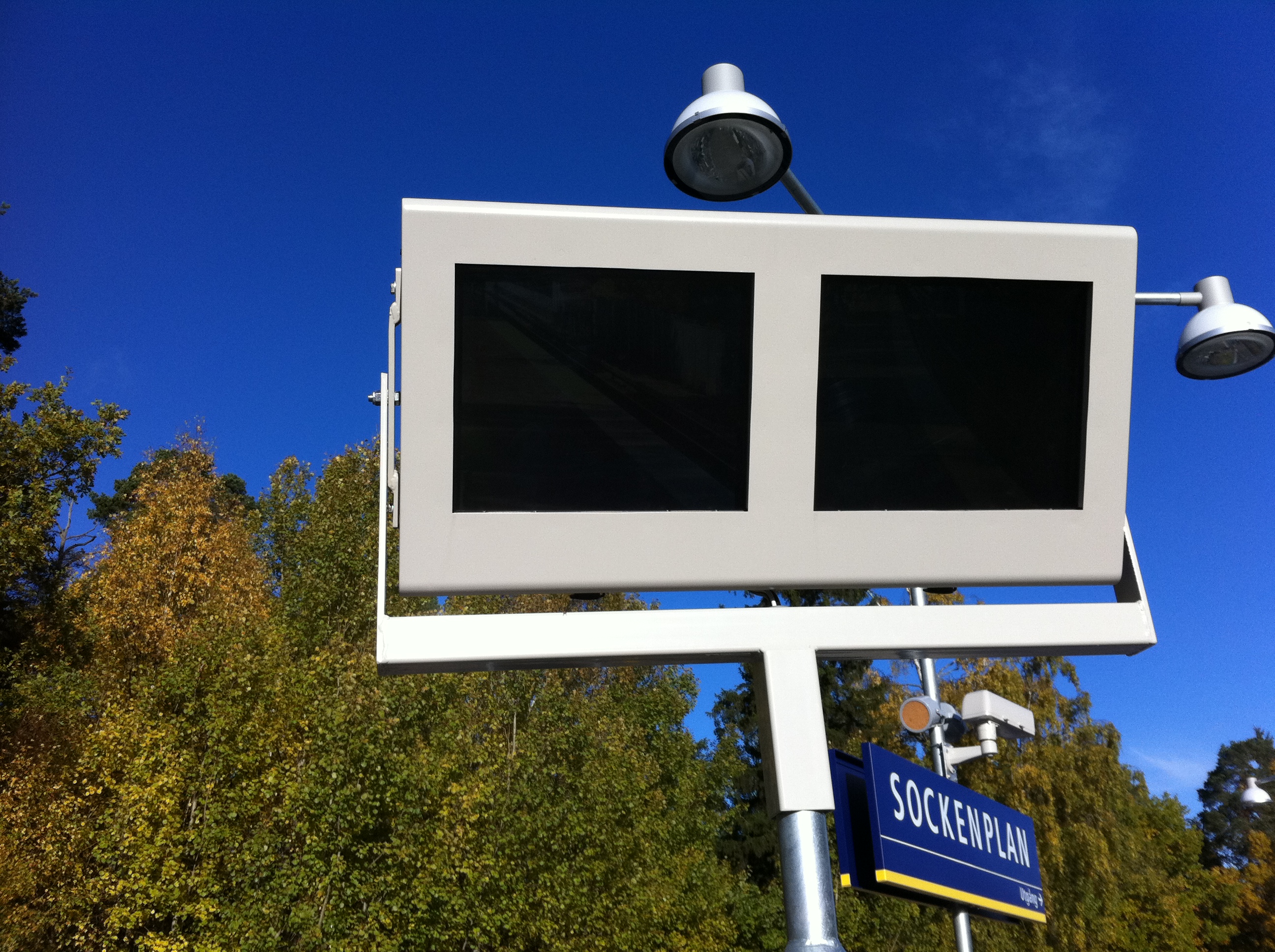LCD Enclosures on Railway Platforms
Posted by: Richard Williams | Posted on: | 0 Comments
Providing commuters with up to-the-minute information detailing delays, time table changes and arrivals, is now an essential part of running transportation companies such as railways.
Because people are so reliant on trains arriving on time in order to make connections or to arrive for appointments on time, keeping customers informed of possible delays or scheduling changes enables commuters to make alternate arrangements or call ahead to provide details of their arrival.
For many years now, information screens around ticket offices have provided this sort of information, however, with advances in outdoor digital signage, it is now possible to provide customers with screens on the platforms too.

Armagard LCD enclosures on a Scandinavian railway platform
An increasing number of train and station companies are turning to LCD enclosures as a means of providing outdoor screens for platform areas, due to the enclosure ability to operate in all weathers. LCD enclosures also provide flexibility for the transport companies in letting them use the screens of their choice, rather than having to source particular outdoor models.
Several train and station management companies across Europe and America have installed LCD enclosures, which house standard high brightness LCD screens, on platforms enabling train companies to keep customers informed of train arrivals in real time.
LCD enclosures have even been installed in some locations where weather conditions are particularly challenging such as in Scandinavia and India, where respective extreme cold and heat means keeping the screens at operable temperatures is essential.
For cold locations such as Scandinavia, heated and insulted LCD enclosures ensure the internal environment never drops too low, even when the ambient conditions are well below zero. Freezing temperatures can quite quickly disable standard screens as metals, such as wiring, contracts and breaks, leading to permanent failure. With thermostatically controlled heaters, which switch on when temperatures plummet too low, the screens can operate in both winter and in the summer when temperatures are a lot warmer, as the heaters switch off when temperatures rise.
For extremely hot locations such as India, the opposite problem occurs and the screens need continuous cooling. Screens are extremely susceptible to overheating, not only due to ambient temperatures, but also because of the internal heat generated y the device itself. While cooling fans are often sufficient in most locations, for extreme environments, air conditioners are often the only solution to providing the necessary cooling.
Cooling fans and often air conditioners ensure that the internal temperatures inside the LCD enclosure keep within the LCD’s operating range, while the LC enclosure also maintains a weatherproof barrier from rain and other weather elements, enabling customers to be kept informed of all train delays and schedule changes no matter what the weather or what the location.
Post shortlink:
Popular Products
LCD Enclosure
Need armor for your LCD/LED screen(s)? Outdoors or inside the versatile LCD enclosure protects against thieves, vandals & the weather. Installation idea: NFL stadiums.
Outdoor Digital Signage
Exclusive 46” outdoor screen protection. Dubbed the ‘Totem’, due to its distinct design, it repels damage threats, but attracts audiences. Installation idea: Drive-thru restaurants.
Portrait Flat Panel Enclosure
Safeguard your eye-level advertising display screen(s), indoors or outdoors. Completely customizable, add exciting features like touch screen technology. Installation idea: Restaurant frontages.
Indoor Digital Signage
Popular purchase for retail outlets! Great for ‘point of sale’ persuasion, boost your brand with static & motion advertising from a single unit! Installation idea: Mall of America.




